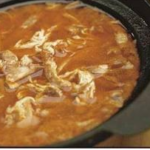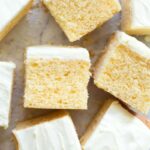Cream of tartar is an acid salt synthesized from sediment from plants and fruits. Its presentation consists of a white powder with a slightly acid taste and no odor. Although its trade name is cream of tartar (tartaric or tartaric acid), its chemical name is potassium tartrate, and it is found on many food labels as additive E-334.
This compound has various uses in different areas such as gastronomy (particularly in confectionery and wine), the food, pharmaceutical, and chemical industries. Likewise, it can be used as an ecological cleaning product inside the home. You can also use it in some homemade beauty treatments.
If you do not know anything about this ingredient and its functions in the kitchen, we explain what cream of tartar is and what it is for, an article full of tips that will surely be useful to you on more than one occasion.
What is cream of tartar?
Potassium tartrate, potassium acid or cream of tartar is considered a by-product of wine production, obtained after the winemaking process.
In winemaking, when the grape juice is deposited in tanks and barrels, this juice or must goes through a fermentation process. During that process, non-alcoholic sediments are formed that adhere to the interior walls of the barrels (tartars) until they form a crust. This crust is extracted, cleaned and purified to be converted into what we know as cream of tartar.
Although crystals mostly form in some stored wine bottles, they can also be found inside corks.
What is cream of tartar for: uses
The cream of tartar is a compound that is recognized above all by people linked to the world of confectionery and gastronomy. The best-known property of this product is its stabilizing power in egg whites; however, cream of tartar is used for much more. Here are some of the uses of cream of tartar in cooking and the food industry.
- Stabilizer for egg whites. It is used to beat whites at various points, managing not only to stabilize the preparation, but also to accelerate the creation of bubbles, increase its volume, give it firmness for longer, provide better tolerance to heat, give it a whiter and brighter color, etc. For this reason, it is used in the preparation of soufflés, meringues and others.
- Provides greater flexibility to the icing to decorate cakes, cookies and cupcakes. In this way, it prevents it from cracking or falling apart after applying it.
- Prevents crystallization of sugar. For this reason, the candies and toppings acquire creamier, more flexible and smoother textures. It is used in the manufacture of fondant for creative pastry, syrups, jams, etc.
- Corrects the acidity of the wine. In addition, it reduces to less than half the hours of cold below zero that the wine needs to stabilize, since it stabilizes it prior to bottling.
- Replaces the egg in vegetarian and vegan meals. In certain preparations, it is used together with sodium bicarbonate to achieve properties similar to those of the egg and bacterial yeast.
- It is used in the preparation of industrial soft drinks to achieve a carbonated effect.
- In the food industry it is used as an acidity regulator and preservative. For this reason, you can find it on the labels of products such as candies, chewing gum, jelly beans, confetti, syrups, sauces, dehydrated soups, and sweets in general.
- Provides more smoothness to ice cream. Industrially it is used as an emulsifier and stabilizer.
- Reduces discoloration on vegetables while boiling. Helps preserve much of the vibrant color of these foods.
- Reduces the sweet taste of sweeteners. Since its natural acidity balances the sweetness.
How to use cream of tartar in cooking?
Have you ever come across recipes that call for cream of tartar, but don’t know how to use it? The most common is to find it in meringue recipes, as well as in sponge cakes or other pastry recipes. In those cases, this is how you can use the cream of tartar in your preparations:
- Baked meringues are better. When you add cream of tartar to the whites, the final product is firmer, lighter and with firmer peaks. When beating the egg whites until stiff, add 1/8 teaspoon for each egg white used.
- Homemade substitute for baking powder. Many industrial baking powders often include cream of tartar and baking soda as their main ingredients, since baking soda is a chemical booster and cream of tartar is an acid that activates it. You can prepare homemade baking powder by combining: ½ tsp. cream of tartar, ¼ tsp. baking soda, and ¼ tsp. cornstarch.
- Produces an emulsifying effect. If you want to make mayonnaise and don’t have vinegar or lemon, you can use 1 teaspoon of cream of tartar.
Other facts about cream of tartar
If you have any questions about this product, you may find the answer below, otherwise do not hesitate to ask us, leaving us your questions in the comments:
- Where do they sell cream of tartar? You can buy it in supermarkets and confectioneries, as it is a very commercial product that comes in a wide variety of presentations.
- How to buy cream of tartar: It is better to buy it in small presentations, and keep it in a cool place. Usually, the recipes that call for this product ask for minimum portions; That is why it is recommended to buy it in presentations that contain around 100 grams, otherwise it is lost. Cream of tartar expires in 1 year.
- How to Substitute Cream of Tartar: If you don’t have any, you can substitute cream of tartar using lemon juice or vinegar, doubling or tripling the dose. That is, if they ask you for 1 tablespoon of cream of tartar, replace it with 2-3 tablespoons of lemon juice or vinegar. If you use this dose in a cake, be sure that it will affect its flavor, although not necessarily in a negative way, but it will taste more acidic. If you don’t like it, you can balance the effect by adding more sugar.



